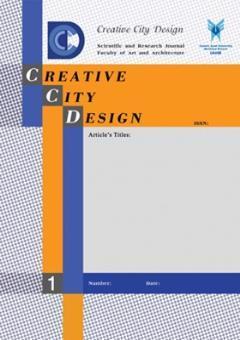Presenting a Conceptual Design Model Based on the Critical Regionalism after the Victory of Islamic Revolution of Iran
Subject Areas : Creative City Design
Nima Mokari
1
![]() ,
Hossein Zabihi
2
*
,
Hossein Zabihi
2
*
![]() ,
Siamac Panahi
3
,
Siamac Panahi
3
![]()
1 - Ph.D Candidate, Department of Architecture, Research Science Branch, Islamic Azad University, Tehran, Iran
2 - Associate Professor, Department of Urban Development, Science and Research Branch, Islamic Azad University, Tehran, Iran
3 - Assistant Professor, Department of Architecture, Research Science Branch, Islamic Azad University, Tehran, Iran
Keywords: Organizational Behavior, Design Process, Regionalism, Critical Regionalism ,
Abstract :
The national security of each country is provided through regional cooperation and global interaction and interdependency. The current study was conducted with the goal of presenting a conceptual design model based on the critical regionalism after the victory of the Islamic Revolution of Iran. The Mixed Research Method (first by studying books, articles, etc., and then coding qualitatively and analyzing the textual contents, and finally using a software in the quantitative section) was employed and the statistical population of the research in qualitative section included all articles and theoretical foundations related to the variable under study, and in the quantitative section, it included informed policy researchers and those individuals whose research and executive domain were relevant to the subject of the study. The research findings of the qualitative section were based on 39 finalized articles which resulted in the identification of 52 open codes and 10 axial codes, including local forms, modern movement, the legend and reality of the region, information and experiences, space/place, typology/topography, tectonics/layout, handmade (artificial) /natural, intuitive (visual)/tactile, and postmodernism and regionalism. The identified variables were considered in terms of level of model, type, base and the area of focus. To analyze the data which were collected to design the interview questions, the methods of calculating the frequency and mean and the method of Shannon were used, and the MAXQDA software was used for the interview qualitative analysis. In the quantitative section, to determine the final priority of the model criteria by ANP technique, the initial super matrix (unweighted), weighted super matrix and finally the limit super matrix should be calculated, and every element of this diagram should be measured in different stages of paired comparison technique. The Dematel Technique was used to determine the priority of the criteria; the first priority was assigned to the index of “lack of interaction with the place, while considering the techniques of global civilization”, and the last priority was assigned to the index of “abstract misperception”, and some recommendations were presented in this regard.

